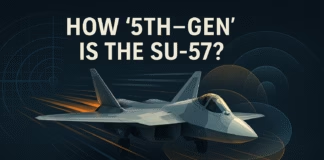Why pilots train for “the toughest minutes”
Ask any captain and they’ll tell you: routine flights are won during planning; tough flights are won in seconds. In fast-changing weather, with an engine acting up, or when terrain is close, pilot decision-making in emergencies is really about preparation meeting clarity. The best crews don’t “wing it.” They build habits, brief traps, and use standard words so the right action comes out under pressure. This article humanizes those moments and shows how pros decide—quickly, safely, repeatably.
The mental model: aviate → navigate → communicate
Every story here starts with the same spine. Aviate (stabilize the airplane), navigate (establish safe path and energy), communicate (tell ATC/cabin what you’re doing). That order isn’t negotiable. Pilots memorize pitch–power “known numbers,” practice hand-flying, and keep mode awareness sharp so automation never becomes a trap. The foundational skills live in the FAA’s Pilot’s Handbook of Aeronautical Knowledge (PHAK)—checklists, human factors, aeronautical decision-making—and in the Aeronautical Information Manual for real-world procedures and phraseology.
Weather: when the sky throws a surprise
Picture this: descending through a broken deck, the ride goes from light chop to credible bumps and the tops ahead bloom red on radar. A calm captain will:
- Aviate: set turbulence penetration speed, belts on, automation configured for stability (or hand-fly if the autopilot hunts).
- Navigate: offset around convective echoes, respect gust fronts and anvil outflow, and consider holding or diverting. Strategic avoidance beats threading the needle.
- Communicate: “Unable present heading due weather, request 20 right,” then a heads-up to the cabin.
Great weather calls start long before that moment—by checking prog charts, SIGMETs, and convection outlooks from the Aviation Weather Center, and by agreeing on a “no-go box” during the approach briefing. If a line builds faster than forecast, go-around is a decision, not a failure. After landing, many crews file confidential reports to NASA’s ASRS; thousands of weather lessons there echo the same wisdom: protect energy, keep options open, brief early.
1Engine-failure on takeoff: the 10-second frame

- Below decision speed: reject.
- At/after liftoff with yaw: pitch for target speed, trim, clean up, then identify/verify/correct.
- Wrong runway? Wrong airport? Say it out loud early and request vectors. Clarity beats ego every time.
Terrain: keeping “land meets sky” where it belongs
The most insidious threat is controlled flight into terrain (CFIT)—perfectly good aircraft flown into rising ground due to mis-set altimeters, wrong modes, or busted situational awareness. Modern TAWS/EGPWS is phenomenal, but it’s a last barrier, not a plan. Crews prevent CFIT by:
- Briefing the escape route. If the missed or escape takes you to the safer valley, know that heading in your sleep.
- Cross-checking altitudes. Final approach fix altitudes, MDA/DA, and any step-down altitudes read aloud and verified.
- Respecting automation limits. VNAV is wonderful—until it isn’t. If the path gets weird, click off and fly the pitch–power you briefed.
For terrain-rich ops, many pilots study accident synopses and human-factors notes in NASA ASRS and the AIM’s instrument procedures sections. The best habit? Say the minimums and the missed before the marker, every time.
Three real moments (human, not Hollywood)
- Weather wall on the arrival. Approach shows building cells over the initial fix. The captain doesn’t “hope it clears.” They ask for a hold and deviation now, tell the cabin “expect delay,” and keep fuel math transparent. Ten minutes later, vectors to the other side and a smooth ride to final. The win wasn’t luck—it was early language and an unhurried pace grounded in the AIM playbook.
- Engine rumble, ambiguous indications. The crew resists the urge to “fix it fast,” runs memory items, then QRH. They choose a long runway with great rescue coverage and a straight-in. Passengers only feel an extra circuit; the cabin hears calm English, not jargon. The lesson matches the safety-study refrain: stabilize, verify, then act—exactly the kind of case pilots debrief through ASRS to help everyone learn.
- Black-hole approach at night. Sparse lights, strong winds, and a visual tempt you below path. The first officer speaks up; the captain calls a go-around with no drama. Second try is an ILS with vertical guidance and a hard floor at DA. That call—backed by PHAK’s decision-making guidance—turns a risky arrival into a non-event you’ll never read about in the news.
Checklists you can paste into your kneeboard
The 10-second weather check
- Where’s the out? (heading/altitude)
- What’s my safe speed now?
- Do I need vectors or a hold? Ask—don’t wait.
Use the Aviation Weather Center to make the preflight picture real: G-AIRMETs, SIGMETs, convective outlooks.
The engine anomaly triad
- Pitch–power–trim (hands off the levers)
- Identify–verify–correct (challenge–response)
- Plan runway/escape, brief the cabin
The terrain guardrails
- Fly the published vertical path when available
- Call “minimums” and execute the missed as briefed
- If the automation argues, you win—hand-fly
Training that makes fast decisions easier
Nothing replaces reps. Line crews and GA pilots alike sharpen instincts with scenario-based sims and targeted practice. If you’re building your plan, here’s where to start:
- Build raw-data comfort. One leg each month: flight director off, localizer only, pitch–power numbers.
- Script your words. Agree on exact calls for windshear, go-around, smoke/fumes, and engine failures.
- Debrief with data. Export logs, review unstable segments, and read one ASRS report after every sim. It’s free wisdom.
- Stay current on procedures. The AIM and PHAK are not just for checkrides; they’re living references.
For deeper skill-building, explore our internal hubs: Flight School Guides, Simulator Technology, and Pilot Career Advice—we map sim scenarios, pitch–power cheatsheets, and human-factors drills you can fly this week.
What passengers should know about “split-second” calls
From the cabin, decisive actions can look abrupt: a sudden go-around, a diversion, a loud engine checklist, or a firm command to sit down. Behind that calm voice is a workflow honed in training. Pilots continuously balance risk: weather growth vs fuel; engine symptoms vs runway options; visual cues vs terrain data. The right call is the one that preserves energy, options, and time—even if it costs schedule minutes. That’s why you’ll see crews follow the book; the book encodes thousands of lessons from NTSB cases and NASA ASRS reports so a future flight can be safer than the last.
Bottom line
The toughest minutes reward preparation, not bravado. The pilots who seem “lucky” are usually the ones who briefed better, practiced more, and spoke clearly when each second mattered. Use authoritative weather tools at the Aviation Weather Center, keep procedures current with the AIM and PHAK, learn from others in ASRS, and build habits you can trust. Calm decisions aren’t an accident—they’re a skill.
Conclusion
The ability to make split-second decisions is what defines the difference between ordinary pilots and extraordinary ones. In moments of crisis, the calmness under pressure, quick thinking, and confidence in their training are what ensure pilots make the right call. Whether it’s managing an engine failure, avoiding a mid-air collision, or reacting to rapid decompression, every decision counts. Pilots know that their actions in these critical moments can save lives, and it’s their ability to remain calm and composed that allows them to navigate even the most high-stress situations with precision.






